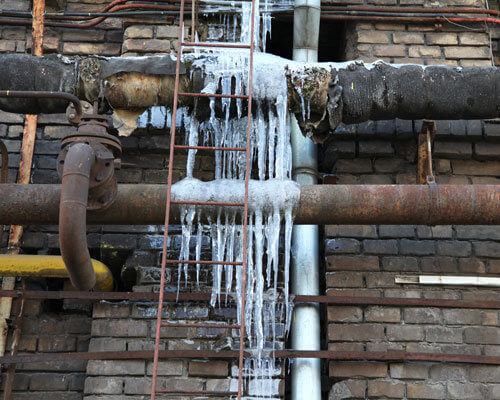Preventing Frozen Pipes in Cold Weather: Expert Strategies
Preventing Frozen Pipes in Cold Weather: Expert Strategies
Blog Article
The author is making a number of good annotation relating to 6 Ways to Prevent Frozen Pipes as a whole in the content which follows.

Winter can wreak havoc on your pipes, specifically by freezing pipelines. Right here's exactly how to prevent it from taking place and what to do if it does.
Introduction
As temperatures decline, the danger of frozen pipes increases, possibly bring about costly fixings and water damages. Understanding just how to avoid icy pipes is crucial for home owners in chilly environments.
Prevention Tips
Protecting vulnerable pipelines
Wrap pipelines in insulation sleeves or use warm tape to shield them from freezing temperatures. Concentrate on pipelines in unheated or exterior areas of the home.
Home heating strategies
Keep indoor rooms properly heated up, specifically locations with plumbing. Open cabinet doors to enable warm air to distribute around pipelines under sinks.
How to identify frozen pipes
Search for reduced water flow from faucets, unusual odors or noises from pipelines, and noticeable frost on exposed pipes.
Long-Term Solutions
Architectural changes
Take into consideration rerouting pipelines far from exterior walls or unheated locations. Include additional insulation to attics, basements, and crawl spaces.
Updating insulation
Purchase high-grade insulation for pipelines, attics, and wall surfaces. Appropriate insulation assists keep regular temperature levels and reduces the threat of frozen pipes.
Safeguarding Outdoor Plumbing
Garden hoses and outdoor taps
Separate and drain pipes yard pipes before winter. Mount frost-proof spigots or cover exterior faucets with insulated caps.
Understanding Frozen Pipelines
What creates pipelines to ice up?
Pipes ice up when exposed to temperature levels listed below 32 ° F (0 ° C) for expanded periods. As water inside the pipes freezes, it broadens, putting pressure on the pipe walls and possibly creating them to break.
Threats and problems
Icy pipelines can result in water system disturbances, property damage, and pricey repairs. Burst pipes can flooding homes and create extensive architectural damage.
Indications of Frozen Pipeline
Recognizing frozen pipes early can stop them from breaking.
What to Do If Your Pipes Freeze
Immediate actions to take
If you believe frozen pipelines, maintain faucets open up to eliminate pressure as the ice thaws. Utilize a hairdryer or towels taken in hot water to thaw pipelines slowly.
Verdict
Preventing icy pipelines calls for proactive actions and quick actions. By understanding the reasons, indicators, and preventive measures, home owners can protect their pipes throughout cold weather.
5 Ways to Prevent Frozen Pipes
Drain Outdoor Faucets and Disconnect Hoses
First, close the shut-off valve that controls the flow of water in the pipe to your outdoor faucet. Then, head outside to disconnect and drain your hose and open the outdoor faucet to allow the water to completely drain out of the line. Turn off the faucet when done. Finally, head back to the shut-off valve and drain the remaining water inside the pipe into a bucket or container. Additionally, if you have a home irrigation system, you should consider hiring an expert to clear the system of water each year.
Insulate Pipes
One of the best and most cost-effective methods for preventing frozen water pipes is to wrap your pipes with insulation. This is especially important for areas in your home that aren’t exposed to heat, such as an attic. We suggest using foam sleeves, which can typically be found at your local hardware store.
Keep Heat Running at 65
Your pipes are located inside your walls, and the temperature there is much colder than the rest of the house. To prevent your pipes from freezing, The Insurance Information Institute suggests that you keep your home heated to at least 65 degrees, even when traveling. You may want to invest in smart devices that can keep an eye on the temperature in your home while you’re away.
Leave Water Dripping
Moving water — even a small trickle — can prevent ice from forming inside your pipes. When freezing temps are imminent, start a drip of water from all faucets that serve exposed pipes. Leaving a few faucets running will also help relieve pressure inside the pipes and help prevent a rupture if the water inside freezes.
Open Cupboard Doors
Warm your kitchen and bathroom pipes by opening cupboards and vanities. You should also leave your interior doors ajar to help warm air circulate evenly throughout your home.

I came across that blog posting on Helpful Tips to Prevent Frozen Pipes this Winter when browsing on the search engines. Those who liked our page kindly don't forget to pass it around. I truly appreciate your readership.
Phone Report this page